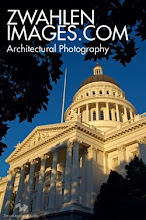I'd like to encourage anyone who has an interest in this project t0 toss a few bucks their way to help the Powerhouse Science Center continue forward. I donated $25 and hope others will do the same.
This would be a great project for our area for both residence and visitors.
___________________________________________________________________
Science museum seeks seed money
by Suzanne Hurt, published on October 27, 2009 at 8:51PM
The Powerhouse Science Center is looking for a few good founding partners.
The Discovery Museum is trying to recruit private investors who can provide seed money to help build a $50 million "iconic" riverfront science and space museum hoped to rival some of the nation's biggest science museums.
The new, expanded museum is being developed to provide adventurous, hands-on science and math education to boost kids' interest in the subjects and to help draw high-tech companies — while launching the kind of serious waterfront development that's been talked about for at least three decades, museum supporters said Tuesday.
The four-acre campus would contain a museum built in the long-vacant Pacific Gas & Electric power station, a planetarium, river-view restaurants, conference center and small amphitheater within Robert T. Matsui Waterfront Park, north of Old Sacramento.
The project could be one of the best investments for the future of the city, region and beyond, said Sacramento County Supervisor Roger Dickinson.
"This center can become the place where our very youngest Sacramentans get excited and enthused about math and science," he said.
A capital campaign stalled by the recession has pushed an opening date to fall 2013.
At a breakfast presentation Tuesday morning, Discovery Museum Board President Michele Wong asked investors, including developers and representatives from banks and high-tech companies, to each contribute $25,000 as founding partners "to keep this project going forward."
The campaign needs $600,000 in cash within the next three months to stay on schedule and continue pursuing $30 million from federal, state and local public funding sources, she said.
"We started a traditional capital campaign three years ago. Then the floor fell out of the economy, and we realized a traditional campaign wouldn't work," she said.
The museum will resume its pursuit of $20 million in private investments after the economy improves, Wong said. Construction is expected to begin late next year and be completed in about three years.
Studies have shown that science centers like these raise students' math and science scores. Sacramento teachers have told staff that museum field trips increased their students' interest and hard work in the subjects for the rest of the year. Former students returned to say the Discovery Museum influenced them to go into science in college and careers, said Catherine Gray, director of the museum's Challenger Learning Center.
The Challenger Learning Center, designed with NASA, uses space flight to encourage students to study and use math, science, language arts and technology. Six weeks of learning in the classroom is rewarded and reinforced with a "mission" involving "mission control" and a simulated rocket.
"It's really great to see how they change from being a kid to an astronaut with a job to do," Gray said. "They have no idea they're doing their schoolwork for the morning."
The Discovery Museum, 3615 Auburn Blvd., focuses largely on school groups, whose students make up 50,000 out of 80,000 annual visitors. The 4,000-square-foot museum, which has room for one major exhibit at a time, isn't open to anyone but students every morning, and only three groups can be accommodated at a time.
While the Discovery Museum offers programs and attractions for families and adults, the size of the four-story Powerhouse Science Center will enable the museum to triple the number of visitors each year. The center will have exhibits on the human body, the world and space.
Another building will house restaurants and an education center where traveling exhibits from museums like the Smithsonian Institution will be displayed. A conference center is planned to serve as a gathering place for teachers and people working in science and technology.
"We know there's a lot more we could be doing, but we lack the space to do it," Wong said.
The new museum will house a three-story rocket where boilers and turbines were once housed in the old power station's atrium. The rocket commemorates Aerojet's role in the U.S. space program.
"That's really Sacramento's connection to the moon," said Beth Callahan, the museum's development and marketing director.
The 150-seat planetarium will be twice the size of the existing planetarium and the building will contain a larger Challenger Center. The new basement will contain an expanded, indoor archaeological dig site, replacing an outdoor site. The dig site will consist of four dirt pits, each three feet deep, where students will dig for remnants of Native American civilizations, the Gold Rush era, Chinese camps and the turn of the century.
A staff archaeologist will teach students how to do soil sampling and use the scientific method to uncover artifacts donated by other museums. Back at school, students will give oral presentations on the artifacts, she said.
"It's so important that we can give these kids practical knowledge," said Stacey McKinley, who chairs the museum's government committee. "They really have to put their hands in it. Then they'll believe in it and fight for it."





No comments:
Post a Comment